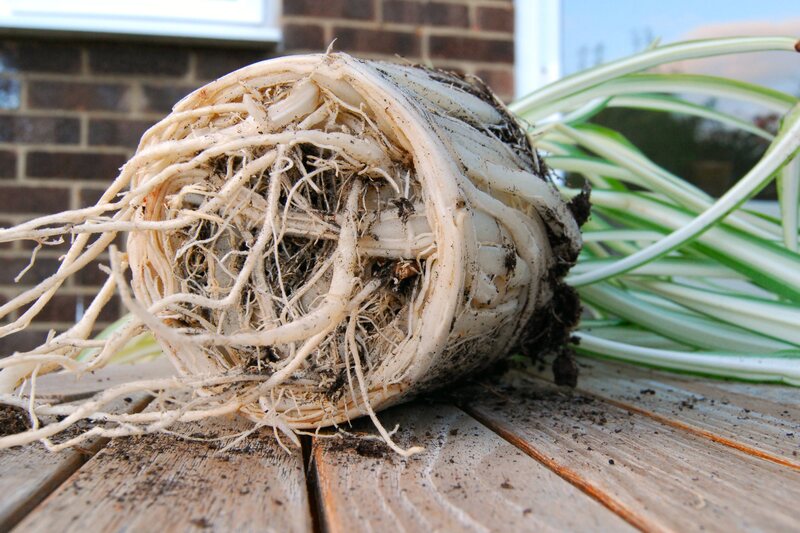Create Climate Resilience with Thoughtful Gardening
Posted on 19/09/2025
Create Climate Resilience with Thoughtful Gardening
Climate change is challenging communities, ecosystems, and individual homeowners worldwide. Unpredictable weather patterns, extreme temperatures, droughts, and floods all test our ability to adapt. But did you know that you can contribute to climate resilience right in your backyard? Thoughtful gardening is emerging as a powerful way to create a more sustainable, adaptable, and harmonious environment.
In this article, we explore how to create climate-resilient gardens using strategies that both fortify your landscape and contribute positively to the planet. Discover the essential techniques, plant choices, design tips, and maintenance habits that fortify your garden against climate variability while supporting biodiversity and conserving resources.

Understanding Climate Resilience in Gardening
What Is Climate Resilient Gardening?
Climate resilience in gardening refers to practices that enable gardens and landscapes to adapt, recover, and thrive despite changing climate conditions. The goal isn't solely to survive extreme weather but to create systems that can bounce back quickly after disturbances, such as drought, heatwaves, storms, or floods. Thoughtful gardening not only protects your property but also strengthens your local ecosystem.
Why Is Building Garden Resilience Important?
- Combats Unpredictable Weather Patterns: A well-designed climate-resilient garden can thrive even when rainfall and temperatures fluctuate significantly.
- Reduces Maintenance and Costs: Resilient gardens need less water, fertilizer, and intervention.
- Supports Biodiversity: Choosing climate-adapted plants provides resources for pollinators and wildlife.
- Protects Soil and Resources: Sustainable gardening practices prevent erosion and soil degradation.
- Enhances Food Security: Home food gardens with resilient crops can supplement food supplies even during shortages or extreme events.
Principles of Thoughtful Gardening for Climate Resilience
Create climate resilience with thoughtful gardening by following core design and management principles that anticipate change and enhance adaptation:
Diversity is Strength
Diverse gardens are more robust in the face of weather extremes or pests. *Plant a variety of species*, with different growth habits, flower timings, and root depths. This spreads risk--if one species suffers, others can fill the gap.
Right Plant, Right Place
Selecting plants suited to your current and future climate is essential. Research local weather projections and choose varieties likely to thrive in both current and expected conditions. *Native and drought-tolerant species* are often best. Group plants according to moisture, soil, and sunlight requirements to make the most of natural rainfall and minimize the need for extra water or fertilizer.
Soil Health is Foundational
Healthy soil retains more water during drought and drains better during floods. Protect and improve soil with organic matter--such as compost, mulch, and cover crops. Avoid compacting your soil by walking on beds when wet or using heavy machinery. Living soil also supports beneficial microbes and invertebrates that help plants resist stress and diseases.
Water Wisdom
Water is a scarce resource in many regions. *Efficient watering* systems--such as drip irrigation--minimize waste. Use mulches to reduce evaporation and catch rainwater with barrels or rain gardens. Design landscapes that slow, spread, and sink water, allowing it to soak into the ground instead of running off.
Observe, Learn, and Adapt
Pay close attention to changes in your garden. Track rainfall, temperature, and pest populations. Be prepared to adjust practices as conditions shift. Flexible, observant gardeners are best equipped to maintain climate resilience over the long term.
Designing a Climate-Resilient Garden
Start With a Plan
Before planting, assess your property:
- Microclimates: Identify warmer and cooler spots, wind corridors, and shaded or sunny areas.
- Soil Types: Test drainage and fertility throughout your yard.
- Water Flow: Observe how rain currently moves through your landscape. Identify areas prone to standing water or drought stress.
A thoughtful garden plan anticipates both current vulnerabilities and future uncertainties, laying the groundwork for a resilient landscape.
Prioritize Native & Climate-Adapted Plants
Native plants are the backbone of resilient gardens. They are well-adapted to local rainfall, temperature extremes, and soil conditions. Including native trees, shrubs, flowers, and grasses supports local insects, birds, and other wildlife. In regions where extreme changes are expected, include species from similar environments that can tolerate projected conditions.
- Perennials and Deep Roots: Perennials with deep root systems are more drought-resistant and buffer against erosion.
- Edible Landscapes: Choose heritage and modern crop varieties bred for local adaptability or drought-tolerance.
- Polyculture and Companion Planting: Mixing plant types helps resist pests and reduces competition for resources.
Utilize Layering and Plant Communities
Natural ecosystems feature multiple canopy layers and species growing together. Mimic this in your garden!
- Tree Canopy: Provides shade, reduces water loss, and buffers temperature extremes.
- Shrub Layer: Offers habitat for birds and breaks wind.
- Groundcovers & Mulch: Protect soil, suppress weeds, and keep soil temperatures stable.
This multi-layered approach increases beauty and productivity while reducing vulnerability.
Embrace Mulching and No-Dig Gardening
Cover exposed soil with mulch (wood chips, straw, leaves, or compost). This conserves moisture, buffers temperature swings, suppresses weeds, and feeds the soil as mulch breaks down. The no-dig or minimal-till approach keeps soil life intact and prevents erosion, a vital consideration in extreme rain or drought-prone climates.
Capture and Store Water
- Rain Gardens: Shallow depressions planted with water-tolerant species to capture stormwater runoff.
- Rain Barrels & Cisterns: Collect roof runoff for garden watering during dry periods.
- Swales and Berms: Landscape features that guide and store water on-site instead of losing it to runoff.
- Permeable Hardscapes: Pavers and gravel paths that let water soak into the ground.
Water security is a hallmark of any climate-resilient garden.
Managing Gardens for Ongoing Climate Adaptation
Monitor & Respond
In a climate-smart garden, observation is key. Watch for stress signals in plants, monitor for invasive species and pests, and keep an eye on soil moisture. Rapid intervention--mulching, adjusting irrigation, or switching plant varieties--keeps your garden one step ahead of challenges.
Practice Integrated Pest Management (IPM)
As weather patterns shift, pest pressures can intensify or change. Avoid routine pesticide use. Instead, use *IPM principles*:
- Encourage beneficial insects (ladybugs, lacewings, predatory beetles) with flowering plants.
- Hand-pick pests where feasible.
- Diversify planting to prevent pest build-up.
- Use barriers (row covers, netting) during outbreak years.
Seasonal Maintenance is Key
A climate-resilient garden needs proactive seasonal care:
- Spring/Fall: Add mulch, plant cover crops, adjust planting layouts as needed.
- Dry Spells: Check irrigation and deepen watering roots rather than frequent shallow watering.
- Storm Preparation: Prune weak limbs, support young trees, and check drainage.
Staying ahead of the weather keeps garden systems healthy all year.
The Role of Biodiversity in Resilient Gardens
Why Biodiversity Matters
Biodiverse gardens are more productive, stable, and less susceptible to catastrophic losses. *Encouraging diverse wildlife species*, such as bees, butterflies, birds, and soil organisms, also strengthens ecosystem services such as pollination and natural pest control.
How to Boost Biodiversity
- Plant a Variety of Flowers: Provide nectar throughout the growing season.
- Include Native Shrubs and Trees: Essential for nesting birds and overwintering insects.
- Build Habitats: Rocks, brush piles, ponds, and dead logs offer shelter for beneficial critters.
- Limit Lawn: Replace sections with wildflower meadows or mixed borders for more insect and animal activity.
Sustainable Techniques for Long-Term Resilience
Composting and Waste Reduction
Recycling garden and kitchen waste keeps organic matter onsite, enhances soil health, and reduces landfill waste. Compost improves nutrient availability, reduces fertilizer needs, and reinforces your soil's resilience against both drought and flooding.
Choose Sustainable Materials
- Use Recycled or Locally-Sourced Materials for hardscapes, fences, and raised beds.
- Opt for Natural Mulches like bark, shredded leaves, or compost.
- Avoid Plastic Landscape Fabrics and synthetic chemicals wherever possible.
Encourage Community and Knowledge Sharing
Climate resilience grows stronger when neighbors share resources, seeds, tools, and wisdom. Joining a local gardening club, participating in seed swaps, or volunteering for community gardens helps everyone adapt more effectively.

Gardening for a More Resilient Climate: Step-by-Step Guide
- Assess Your Site: Map sunlight, wind, soil, and water flow.
- Set Resilience Goals: Drought-proofing, heat tolerance, storm protection, supporting pollinators, or growing food.
- Select Adaptable Plants: Choose a mix of natives and tough exotics from similar climates.
- Design for Diversity: Balance layers, include edibles, flowering plants, and shelter for wildlife.
- Build Soil Health: Regularly apply compost and mulch, and avoid over-tilling.
- Install Efficient Irrigation: Drip systems, rainwater harvesting, and regular soil moisture checks.
- Manage and Monitor: Enact timely seasonal care and keep learning from experience.
Conclusion: Your Garden as a Beacon of Climate Resilience
Creating climate-resilient gardens through thoughtful gardening is a rewarding endeavor with real impact. Whether you steward a small urban yard, a sprawling rural plot, or a community green space, you can help buffer your local environment against climate uncertainty. Every resilient garden acts as a mini-ecosystem, weaving together water-saving practices, healthy soils, diverse habitats, and strong human connections. Start now, and your garden will not only weather the storms--it will flourish for generations to come.
Begin your journey to climate resilience with thoughtful gardening today, and transform your landscape into a sanctuary of balance, beauty, and hope for the future.



